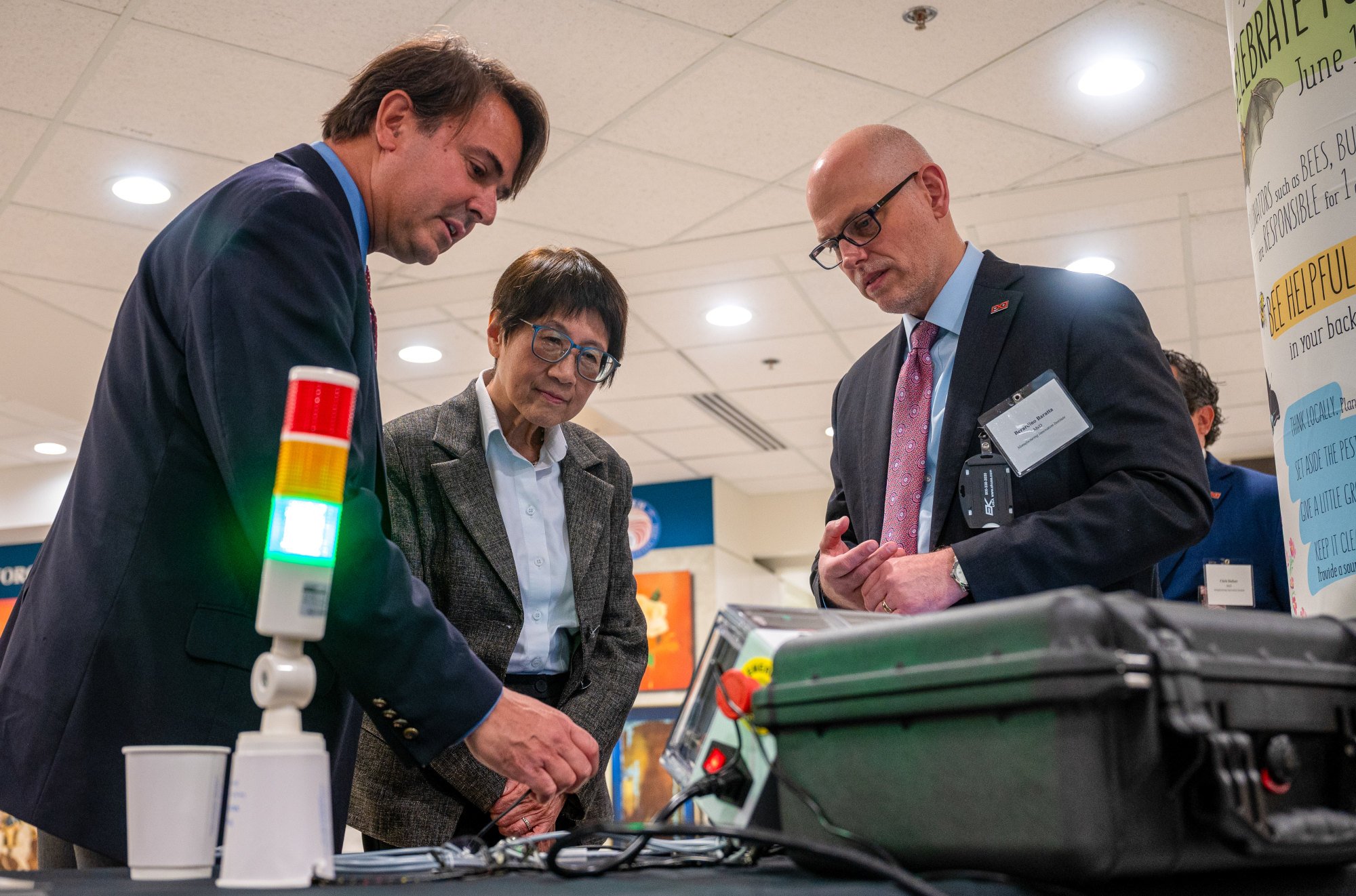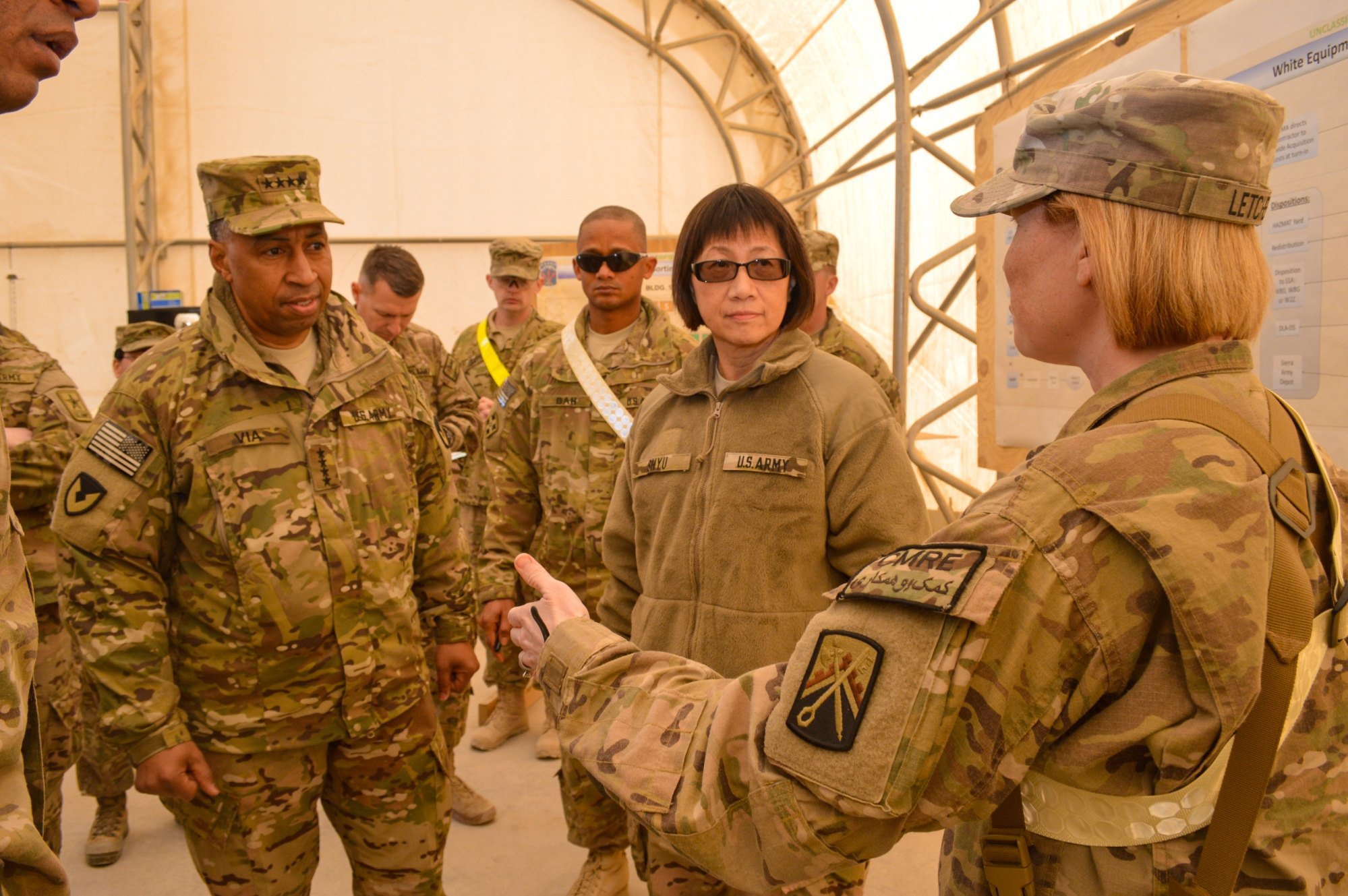The world got a glimpse of the brain behind one of the American military’s most secretive and important initiatives when she gave a rare interview just over a month ago.
A US Senate committee had criticised the Rapid Defence Experimentation Reserve (RDER) initiative and Taiwan-born US undersecretary of defence Heidi Shyu stepped into the spotlight to defend the programme.
Shyu is the Pentagon’s chief technology officer, in charge of research and engineering, and RDER – which is meant to help the United States hold its hi-tech edge over China – has been described as her “brainchild”.
Do you have questions about the biggest topics and trends from around the world? Get the answers with SCMP Knowledge, our new platform of curated content with explainers, FAQs, analyses and infographics brought to you by our award-winning team.
In an interview with US-based news site Breaking Defence, Shyu said “the whole idea [of RDER] was started three years ago when I first walked into the Pentagon”.
She is one of the toughest opponents of the People’s Liberation Army in the race for technological supremacy and has been a leader in US military innovation for decades.
An engineer and mathematician by training, Shyu has reached these heights while maintaining a low public profile. So when she went public to defend the RDER programme, it drew attention to a woman whose family story began on the other side of the Pacific.

Shyu’s family has its origins in east China’s Zhejiang province. After the Kuomintang (KMT) government lost the Chinese civil war to the Communists in 1949, her grandparents and father moved to Taiwan.
Shyu’s grandfather, Shyu Kangliang, was a war hero in China’s bitter struggle against the Japanese invasion during World War II. He was a pilot in the Chinese Air Force during the Sino-Japanese war before becoming the KMT’s air force commander of the Northern China Theatre, headquartered in Beijing during the civil war with the PLA.
After the defeat of the KMT on the mainland, he eventually became an air marshal and deputy commander of the air force in Taiwan.
Heidi’s father, Lawrence “Larry” Shyu Naili, moved to Taiwan as a teenager and went on to marry the daughter of another air force officer on the island. Heidi, the couple’s second daughter, was born in Taipei in 1953.
From 1958 Lawrence studied in America, first at the University of Washington in Seattle and then Columbia University in New York, before becoming a professor of modern Chinese history at the University of New Brunswick in Canada.
After moving to the US at the age of 11, Heidi Shyu completed her undergraduate in mathematics from the University of New Brunswick and postgraduate degree in mathematics at the University of Toronto, before gaining engineering degrees at UCLA.
She started her career at Hughes Aircraft Company in Los Angeles, which later merged with defence giant Raytheon.
At Raytheon, she served as head of the electromagnetic systems laboratory, Joint Strike Fighter (JSF) antenna technology, and JSF integrated radar/electronics war sensors. She led a number of US Air Force research projects, including the development of the radar for the F-35 stealth fighter.
Shyu was later promoted to lead other research units for unmanned combat vehicles, unmanned and reconnaissance systems, aerospace and aviation systems, and was eventually named Raytheon’s vice-president of space and airborne strategy.
From 2000 to 2010, she sat on the US Air Force Scientific Advisory Board, including as vice-chairwoman from 2003 to 2005 and as chairwoman from 2005 to 2008.
These roles represented her successful career as an engineer in the US defence giant Raytheon Company.
“The fact that an Asian woman was able to make it to the senior position of a vice-president of the company was a testament to the excellence of her research work. I am proud of her,” her father wrote in his memoir A Life of Minimum Significance.
Prior to her present appointment, Shyu served under the Obama administration as assistant secretary of the US Army for acquisition, logistics and technology from 2012 to 2016. During that time, she was in charge of the army’s weapon and equipment acquisitions, and served as a science adviser and senior research and development official.
Today, the 70-year-old is undersecretary of defence for research and engineering. As such, Shyu is the Pentagon’s CTO and supervises key innovation agencies including the Defence Advanced Research Projects Agency (DARPA), Missile Defence Agency, Space Development Agency and the Defence Science and Innovation Board offices, making her the “tech brain” of the entire US military.
Her job, as she told a defence industry conference last year, was being “laser focused on critical technologies to deter and counter China”. Shyu said she wanted to ensure that Washington’s commanding lead in technology could offset Beijing’s industrial abilities in mass production and scale.
“Just because you’ve got 1,000 missiles, that doesn’t mean I have to have 1,001,” she said. “I look at the whole situation and landscape very differently.”
However, when pressed for details about the technologies under development, she replied: “It’s classified.”
“I will prefer them not knowing what I’m doing,” she said of China.
RDER is a key part of Shyu’s mission.
The initiative is meant to spot underdeveloped technologies that could be critical in the US-China tech race, but the US Senate Committee on Appropriations described it as “bureaucratic” and “duplicative”.
Shyu told Breaking Defence that the programme filled important gaps in technology that nobody else was developing. “We’re doing things because the services are not,” she was quoted as saying.
Days later, the typically low-profile technocrat attended a conference on emerging technologies, where she highlighted some of the projects the RDER programme had supported.
These included ultra-high-altitude surveillance and communication balloons, solar-powered ultra-high-altitude, ultra-long-endurance drones for the navy, and a project to integrate multiple sensors in one operating system for the marines.

However, Shyu’s soaring defence career came at a personal cost.
As part of his job at the University of New Brunswick in Canada, Lawrence Shyu did research and academic exchanges in mainland China. Fearing the effect this could have on his daughter’s ability to pass high-level security screening, Lawrence Shyu stopped direct contact with her for decades.
“I was worried that my academic activities [in China] would affect Heidi’s career and her prospects, so I cut off contact with her [in the] 1980s,” he said in his book, which was published in 2014.
“Not until 2012, when her grandmother was ill in a Taipei hospital, had we seen each other again. That was more than 10 years after my retirement. I believe this would no longer affect her negatively.”
Shyu is one of a group of American politicians and officials from the Chinese diaspora active in Washington, who bear the legacy of the last Cold War across the Taiwan Strait – and now carry forward the new cold war across the Pacific.
The families of these officials left mainland China for Taiwan, where they rose to prominence in military, business and government. The group includes US trade representative Katherine Tai and Christopher Lu, the US ambassador to the United Nations for management and reform, and former transport secretary and labour secretary Elaine Chao.
Tai’s grandfather was a member of KMT’s Legislative Yuan from Henan province, while Lu’s grandfather from Tianjin was a legislator and then minister of justice in Taiwan. However, both tai and Lu were born in the US after their mainland-born parents had migrated to America from Taiwan.
Chao’s father James, a schoolmate of former Chinese president Jiang Zemin in the 1940s in Shanghai, also fled to Taiwan with the KMT government in 1949 before going on to the US in the 1960s, although he worked in shipping business rather than politics. Elaine was born during the family’s stay in Taipei in 1953.
These family stories represented part of the history in the Cold War, during which the KMT and its Republic of China government in exile in Taiwan, as an ally of the US, confronted the Communists’ People’s Republic of China on the mainland for decades, while some of the elite went on to settle in the US.
Now, with the strategic competition between Washington and Beijing extending into all aspects, from trade to technology, from military to sports in the “new cold war”, the second or third generation immigrants from Taiwan are playing their roles in the political stage of Washington.
For example, during his trip to China last week to manage risks during the US power transition period, US national security adviser Jake Sullivan was accompanied by a team largely comprised of Chinese speakers. Among them, Diana Chu Partridge, a former diplomat with the US embassy in China, is now director for China at the National Security Council. Joy Li, another member of the contingent, studied Mandarin at Beijing Normal University in 2008 and now is the NSC director of strategic planning.
Beijing views Taiwan as part of China to be reunified, by force if necessary. Most countries, including the US, do not recognise the island as an independent state, but Washington is opposed to any attempt to take the island by force and is committed to supplying weapons to it to defend itself.
More from South China Morning Post:
- 100 days into the job, Taiwan’s new leader is cutting mainland ties by reframing history
- Agenda for US-China talks includes Taiwan, South China Sea, Russia and AI
- Mainland China reins in coastguard patrols but maintains pressure on Taiwan
- Taiwan bans mainland rapper for describing island as part of China
- Taiwan’s military holds live-fire missile drill at sensitive test site
For the latest news from the South China Morning Post download our mobile app. Copyright 2024.





